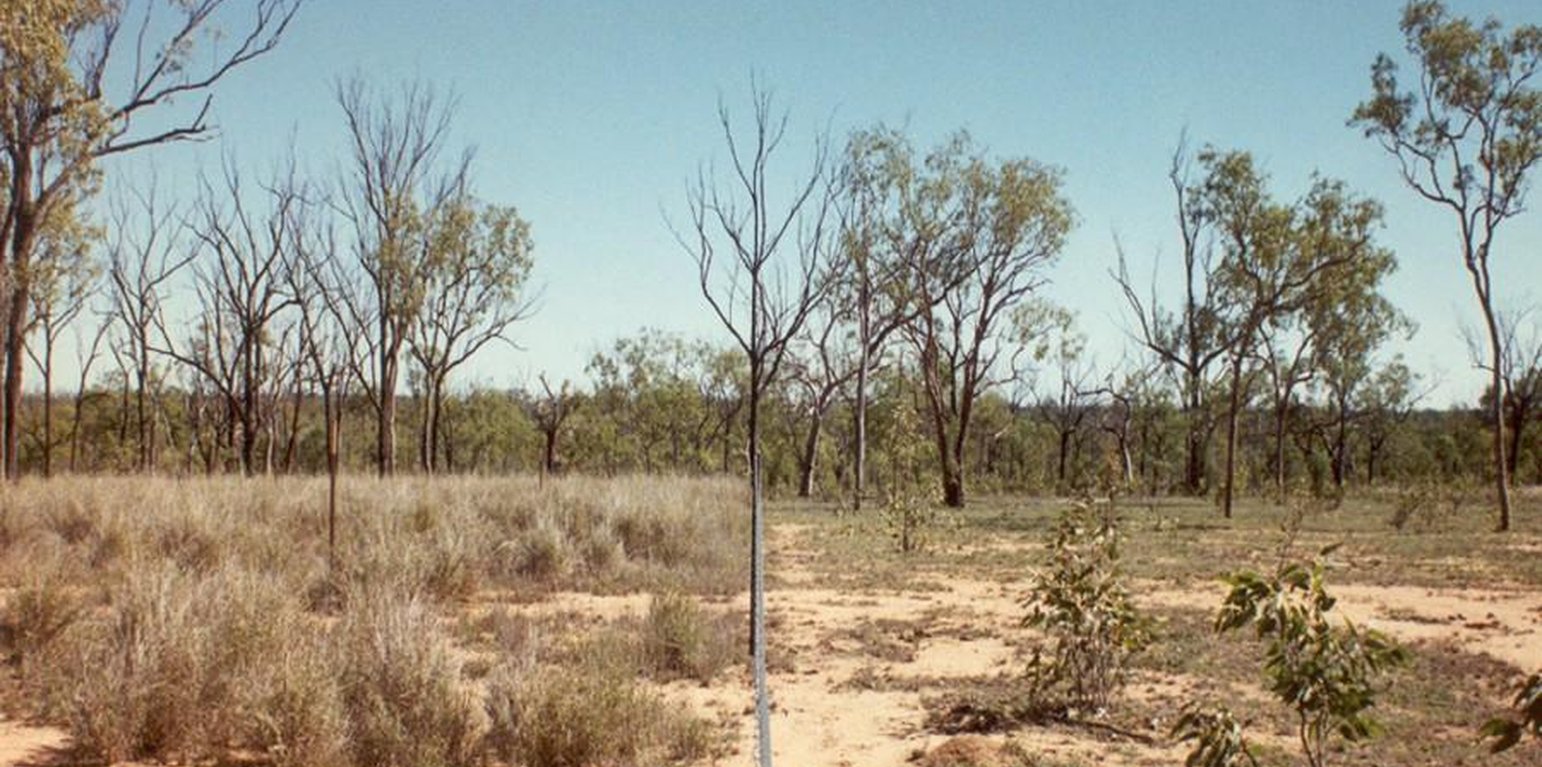



Open eucalypt woodlands cover approximately 15 million hectares in the semi-arid plains of north-east Australia, and support about a million head of cattle. Keeping these grazing lands productive and healthy demands good management, and getting the right balance between stock numbers and the forage resource is a considerable challenge.
Land in good condition has a healthy coverage of so-called ‘3P grasses’: native perennial, productive and palatable grasses, important to cattle and to the health of the landscape. Less palatable plants include annual grasses, native and exotic forbs and shrubs. The heterogeneity of the pasture resource results in uneven utilisation, and thus overgrazing in parts.
In order to prevent pastures in good condition from degrading, or to restore/improve deteriorated pastures, utilisation needs to be adjusted according to climate and the state of the ‘3P grasses’. In practice, the only means of manipulating pasture composition over large areas are grazing, resting from grazing, and burning.
The flexible Ecograze system includes wet season resting, and is based on the establishment of three paddocks with two herds within a rotational system. The key is that all paddocks get some wet season rest two years out of three. Wet season rests are divided into two phases: (1) The early wet season rest starts after the first rains in November/December and continues for 6-8 weeks, it is particularly good for perennial grass recovery; (2) the late wet season rest lasts until March/April and aids both seed set and vegetative recovery.
Average paddocks of around 3,000 ha in size are sub-divided into three relatively equal sizes, though some flexibility is required to balance variation in the productive capacity of different land types within the paddock. The paddocks are fenced and extra water points through polythene piping and additional water troughs, and where required, pumps are established. The return on investment can be realised within a few years.
The main management challenges are: (1) the timing and length of the early wet season rest, which depends on how effectively the early rains promote vegetative growth of perennial grasses, and (2) the movement of animals during the wet season. The number of stock movements are fixed - but the timing is flexible and should be responsive to the situation: the challenge is to learn to assess the pasture condition, read the situation, and schedule the timing and length of the rest period accordingly. The main criterion is the recovery state of perennial grasses.
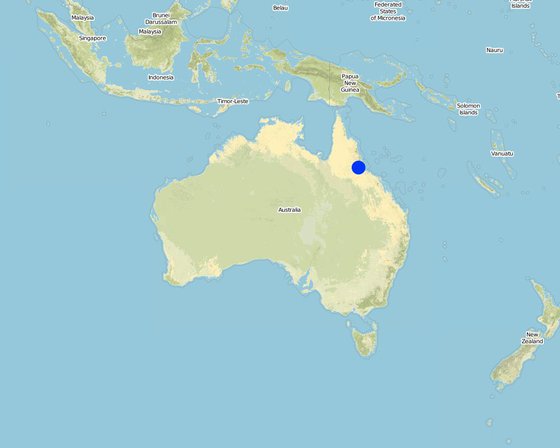
Location: North-eastern Queensland, Queensland, Australia
No. of Technology sites analysed:
Spread of the Technology: evenly spread over an area (10.0 km²)
In a permanently protected area?:
Date of implementation: less than 10 years ago (recently)
Type of introduction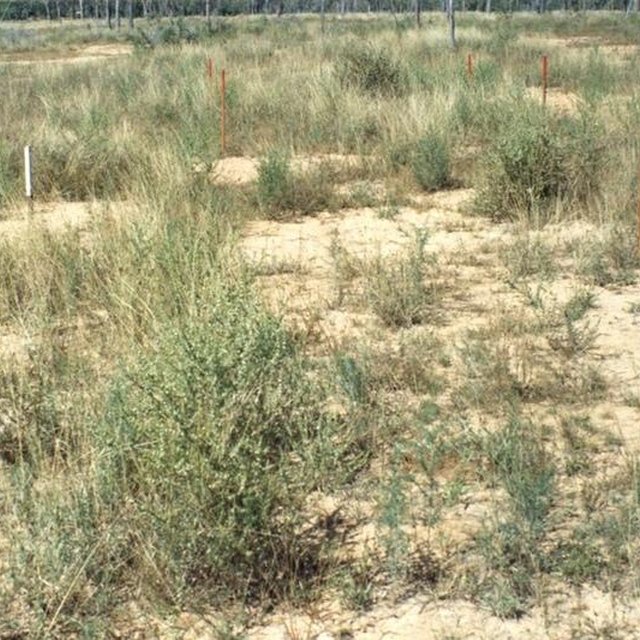
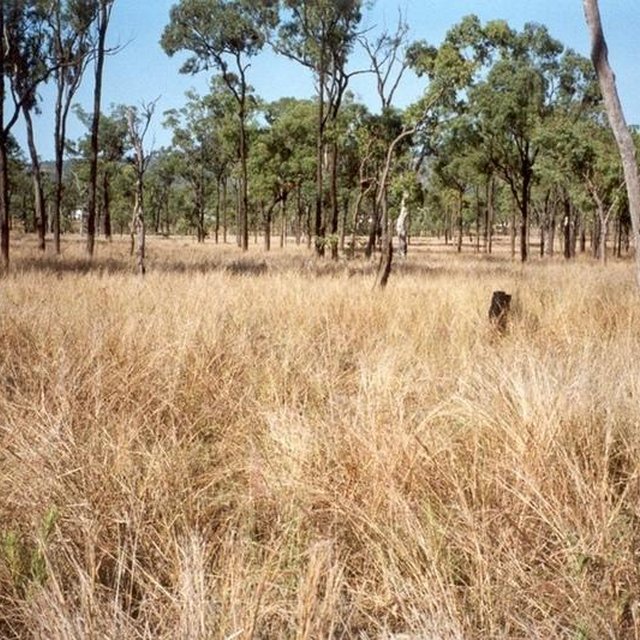





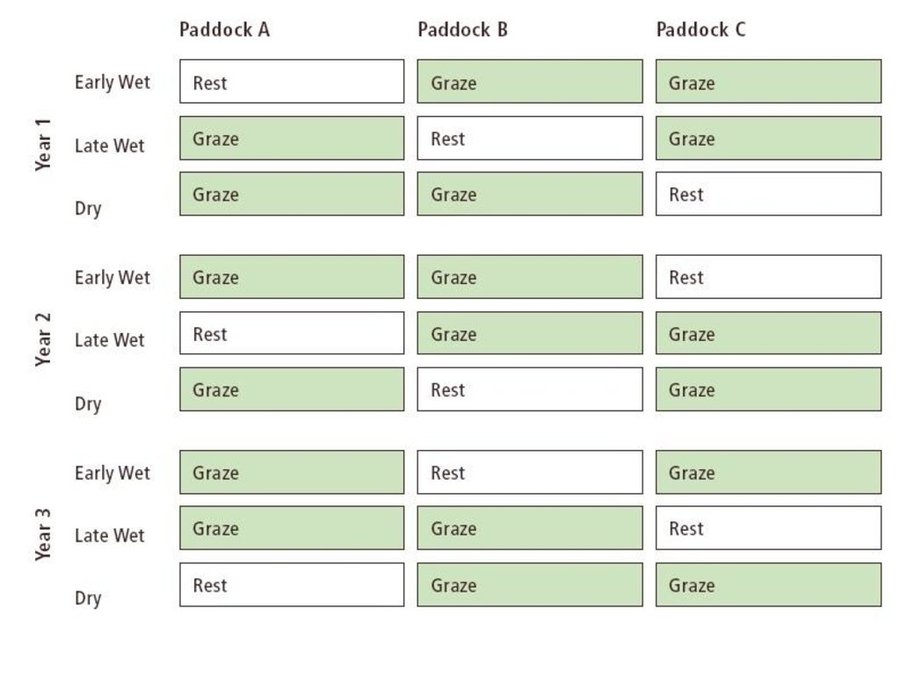
| Specify input | Unit | Quantity | Costs per Unit (USD) | Total costs per input (USD) | % of costs borne by land users |
| Labour | |||||
| Labour | ha | 1.0 | 4.0 | 4.0 | 100.0 |
| Equipment | |||||
| Tools | ha | 1.0 | |||
| Construction material | |||||
| others (specify): metal, wire, wood | ha | 1.0 | 6.0 | 6.0 | 80.0 |
| Total costs for establishment of the Technology | 10.0 | ||||
| Total costs for establishment of the Technology in USD | 10.0 | ||||
| Specify input | Unit | Quantity | Costs per Unit (USD) | Total costs per input (USD) | % of costs borne by land users |
| Labour | |||||
| Labour | ha | 1.0 | 1.0 | 1.0 | 100.0 |
| Equipment | |||||
| Tools | ha | 1.0 | |||
| Total costs for maintenance of the Technology | 1.0 | ||||
| Total costs for maintenance of the Technology in USD | 1.0 | ||||